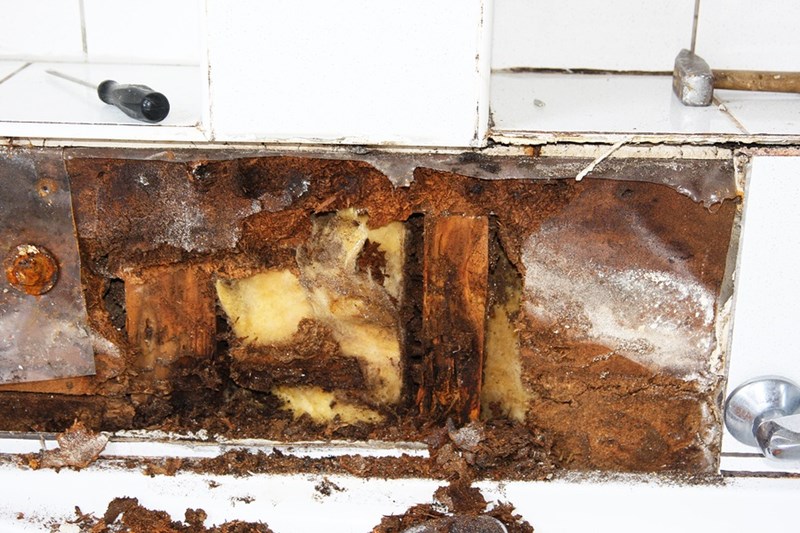Are you currently in search of ideas on How to Prevent Bathroom Water Damage?

The shower room is extremely vulnerable for damp buildup and prospective water damages due to the regular use water in it. This article provides basic inspection techniques to assist identifying water damages risks.
The regular use water in the washroom makes it extremely vulnerable for damp build-up and also possible water damage. By examining it frequently, you can minimize water relevant problems.
The following set of evaluations is simple to do and should be done as soon as in every three months in order to keep your restroom in good shape as well as to avoid possible water problems brought on by the bath tub, the shower, pipe joints and plumbing, sinks, cabinets, and the toilet
Do not overlook carrying out these assessments as well as be complete while executing them. Bear in mind that these straightforward evaluations can conserve you a great deal of money by providing early indications for water damage
Sinks and Cabinets
Sinks and cabinets are exposed to dampness and also moisture day-to-day and also are commonly ignored. Check on a regular basis under the sink as well as on the countertop above it. Fix any kind of drip in the trap as it may suggest drainpipe troubles. Check out the sink, sluggish draining pipelines might suggest a blocked drainpipe. Replace sink seals if they are cracked or loosened.
Bath tub as well as Shower
The shower as well as bathtub require unique interest as well as upkeep. Examine the ceramic tiles and replace if cracked. Ensure that there is no missing cement between the tiles. Inspect and also replace cracked caulking at joints where the wall surfaces fulfill the floor or the bathtub. Obstructed drains pipes as well as pipes troubles will certainly avoid the bathtub from drying out and might indicate serious troubles below the bathtub. Seek advice from an expert instantly to stop architectural damage. Take notice of stainings or soft areas around the bath tub walls as they may indicate an inner leakage.
Plumbing
Signs for water damage are hard to identify considering that most pipelines are set up inside the walls.
Pay unique interest to flooring and also walls dampness and stains as they may show an undetectable plumbing problem. Examine wetness degrees in adjacent rooms too.
The Toilet
The commode is a susceptible water joint. Check the water lines and also search for leakages around the bathroom seat, in the hose, and also under the water storage tank. If you detect any type of signs of dampness on the floor around the commode, check for leakages in the toilet rim and also storage tank seals.
Be aware that hanging bathroom bowl antiperspirants increases the possibilities for clogs.
10 TIPS TO PREVENT WATER DAMAGE IN THE BATHROOM
The average household uses approximately 80-100 gallons of water per person per day. For a family of 4, that's almost 2,500 gallons of water a week! The largest portion of this consumption comes from bathroom use. Flushing the toilet uses the most water, followed by taking a shower or bath. With that much water running through the home, water damage in the bathroom is bound to happen. Knowing how to spot signs of a water leak is essential to preventing long-term damage. This guide provides you with tips to reduce the impact of water damage on your bathroom.
CAUSES OF BATHROOM WATER DAMAGE
Pipe breaks are the most common cause of water damage we see in our daily jobs. The age of a pipe plays a large role in a pipe break as well as corrosion. Over time, the metal begins to break down, allowing water to escape. Frozen pipe breaks are also a concern in the winter months. Toilet overflows caused by paper products or children flushing inappropriate items. Degraded caulking around the toilet or bathtub can allow water seepage, sometimes behind the fixture, into the subfloor or walls. Condensation forms when the water in a pipe is cooler than the air temperature. Beads of water form on the exterior of the pipes, sometimes so much so that the water begins to drip and pool below. Sink or shower backups created by poor drainage. HOW TO PREVENT WATER DAMAGE IN YOUR BATHROOM
Inspect your toilet supply line for worn or frayed hoses and replace them as needed. Winterize your plumbing to prevent a frozen pipe break. Use vent fans to prevent condensation that can lead to mold growth. Routinely check and replace degraded caulking around your toilet or bathtub. Increase the temperature in your toilet tank and insulate your pipes during the warm summer months to keep condensation from forming. Use child safety locks on the toilets. Flush only toilet paper. "Flushable" wet wipes are actually not good for your plumbing system. Additionally, feminine hygiene products should not be flushed. Prevent water from escaping the tub or shower. Make sure shower curtains are in good condition. Inspect shower doors and replace the seal strip if necessary. Wipe up any water that accumulates on the floor and use bath mats. Water left to sit can cause damage to the tiles and flooring. Refrain from using bath products containing heavy oils to avoid a clogged drain.

Do you enjoy reading up on Common Causes of Water Damage in a Bathroom? Place a remark further down. We will be pleased to listen to your opinions about this piece. We are looking forward that you come back again later on. Sharing is caring. Who knows, you may very well be doing someone a favor. Thanks so much for taking the time to read it.
Book Your Appointment